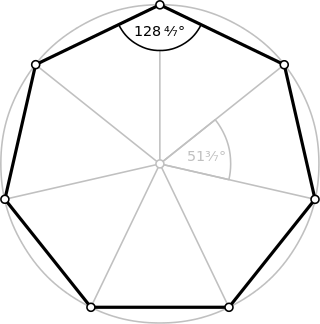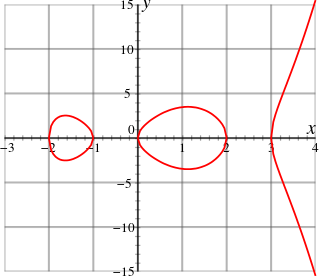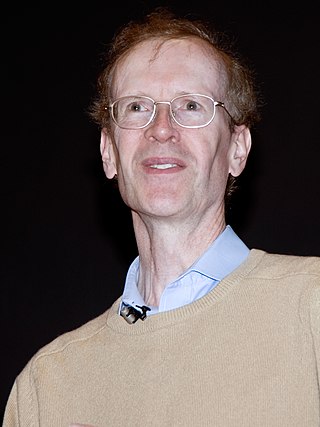Related Research Articles

In mathematics, a field is a set on which addition, subtraction, multiplication, and division are defined and behave as the corresponding operations on rational and real numbers. A field is thus a fundamental algebraic structure which is widely used in algebra, number theory, and many other areas of mathematics.
In representation theory and algebraic number theory, the Langlands program is a web of far-reaching and consequential conjectures about connections between number theory and geometry. Proposed by Robert Langlands, it seeks to relate Galois groups in algebraic number theory to automorphic forms and representation theory of algebraic groups over local fields and adeles. Widely seen as the single biggest project in modern mathematical research, the Langlands program has been described by Edward Frenkel as "a kind of grand unified theory of mathematics."
The modularity theorem states that elliptic curves over the field of rational numbers are related to modular forms. Andrew Wiles and Richard Taylor proved the modularity theorem for semistable elliptic curves, which was enough to imply Fermat's Last Theorem. Later, a series of papers by Wiles's former students Brian Conrad, Fred Diamond and Richard Taylor, culminating in a joint paper with Christophe Breuil, extended Wiles's techniques to prove the full modularity theorem in 2001.

Algebraic number theory is a branch of number theory that uses the techniques of abstract algebra to study the integers, rational numbers, and their generalizations. Number-theoretic questions are expressed in terms of properties of algebraic objects such as algebraic number fields and their rings of integers, finite fields, and function fields. These properties, such as whether a ring admits unique factorization, the behavior of ideals, and the Galois groups of fields, can resolve questions of primary importance in number theory, like the existence of solutions to Diophantine equations.
There have been several attempts in history to reach a unified theory of mathematics. Some of the most respected mathematicians in the academia have expressed views that the whole subject should be fitted into one theory.
In mathematics, a Galois module is a G-module, with G being the Galois group of some extension of fields. The term Galois representation is frequently used when the G-module is a vector space over a field or a free module over a ring in representation theory, but can also be used as a synonym for G-module. The study of Galois modules for extensions of local or global fields and their group cohomology is an important tool in number theory.
In mathematics, a prime geodesic on a hyperbolic surface is a primitive closed geodesic, i.e. a geodesic which is a closed curve that traces out its image exactly once. Such geodesics are called prime geodesics because, among other things, they obey an asymptotic distribution law similar to the prime number theorem.
Ribet's theorem is part of number theory. It concerns properties of Galois representations associated with modular forms. It was proposed by Jean-Pierre Serre and proven by Ken Ribet. The proof was a significant step towards the proof of Fermat's Last Theorem (FLT). As shown by Serre and Ribet, the Taniyama–Shimura conjecture and the epsilon conjecture together imply that FLT is true.

In mathematics, arithmetic geometry is roughly the application of techniques from algebraic geometry to problems in number theory. Arithmetic geometry is centered around Diophantine geometry, the study of rational points of algebraic varieties.
In mathematics, Serre's modularity conjecture, introduced by Jean-Pierre Serre, states that an odd, irreducible, two-dimensional Galois representation over a finite field arises from a modular form. A stronger version of this conjecture specifies the weight and level of the modular form. The conjecture in the level 1 case was proved by Chandrashekhar Khare in 2005, and a proof of the full conjecture was completed jointly by Khare and Jean-Pierre Wintenberger in 2008.
In mathematics, Belyi's theorem on algebraic curves states that any non-singular algebraic curve C, defined by algebraic number coefficients, represents a compact Riemann surface which is a ramified covering of the Riemann sphere, ramified at three points only.

In number theory, Fermat's Last Theorem states that no three positive integers a, b, and c satisfy the equation an + bn = cn for any integer value of n greater than 2. The cases n = 1 and n = 2 have been known since antiquity to have infinitely many solutions.

In mathematics, more specifically algebra, abstract algebra or modern algebra is the study of algebraic structures. Algebraic structures include groups, rings, fields, modules, vector spaces, lattices, and algebras over a field. The term abstract algebra was coined in the early 20th century to distinguish it from older parts of algebra, and more specifically from elementary algebra, the use of variables to represent numbers in computation and reasoning. The abstract perspective on algebra has become so fundamental to advanced mathematics that it is simply called "algebra", while the term "abstract algebra" is seldom used except in pedagogy.

Wiles's proof of Fermat's Last Theorem is a proof by British mathematician Andrew Wiles of a special case of the modularity theorem for elliptic curves. Together with Ribet's theorem, it provides a proof for Fermat's Last Theorem. Both Fermat's Last Theorem and the modularity theorem were believed to be impossible to prove using current knowledge by almost all contemporary mathematicians.

Barry Charles Mazur is an American mathematician and the Gerhard Gade University Professor at Harvard University. His contributions to mathematics include his contributions to Wiles's proof of Fermat's Last Theorem in number theory, Mazur's torsion theorem in arithmetic geometry, the Mazur swindle in geometric topology, and the Mazur manifold in differential topology.
In algebra, the Jacobson–Bourbaki theorem is a theorem used to extend Galois theory to field extensions that need not be separable. It was introduced by Nathan Jacobson for commutative fields and extended to non-commutative fields by Jacobson (1947), and Henri Cartan who credited the result to unpublished work by Nicolas Bourbaki. The extension of Galois theory to normal extensions is called the Jacobson–Bourbaki correspondence, which replaces the correspondence between some subfields of a field and some subgroups of a Galois group by a correspondence between some sub division rings of a division ring and some subalgebras of an associative algebra.
Jack A. Thorne is a British mathematician working in number theory and arithmetic aspects of the Langlands Program. He specialises in algebraic number theory.
References
- Cornell, Gary; Silverman, Joseph H.; Stevens, Glenn, eds. (1997), Modular forms and Fermat's last theorem, Berlin, New York: Springer-Verlag, ISBN 978-0-387-94609-2, MR 1638473